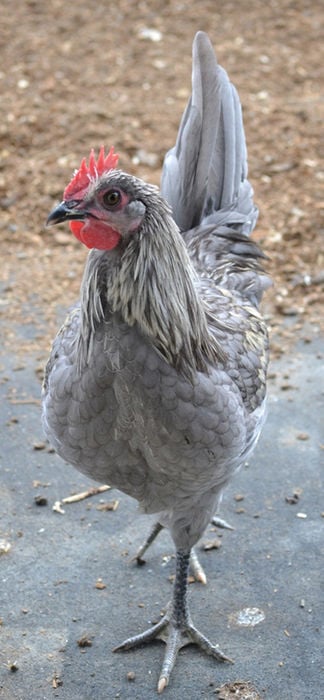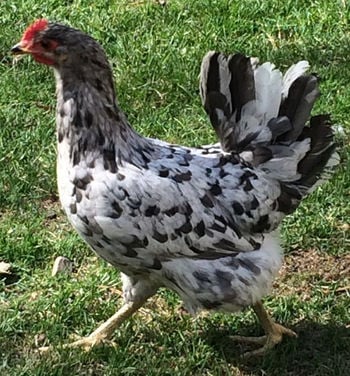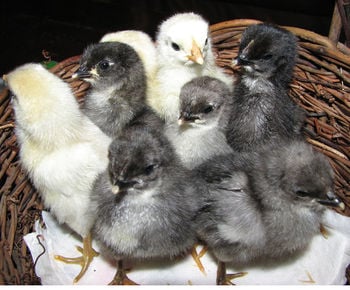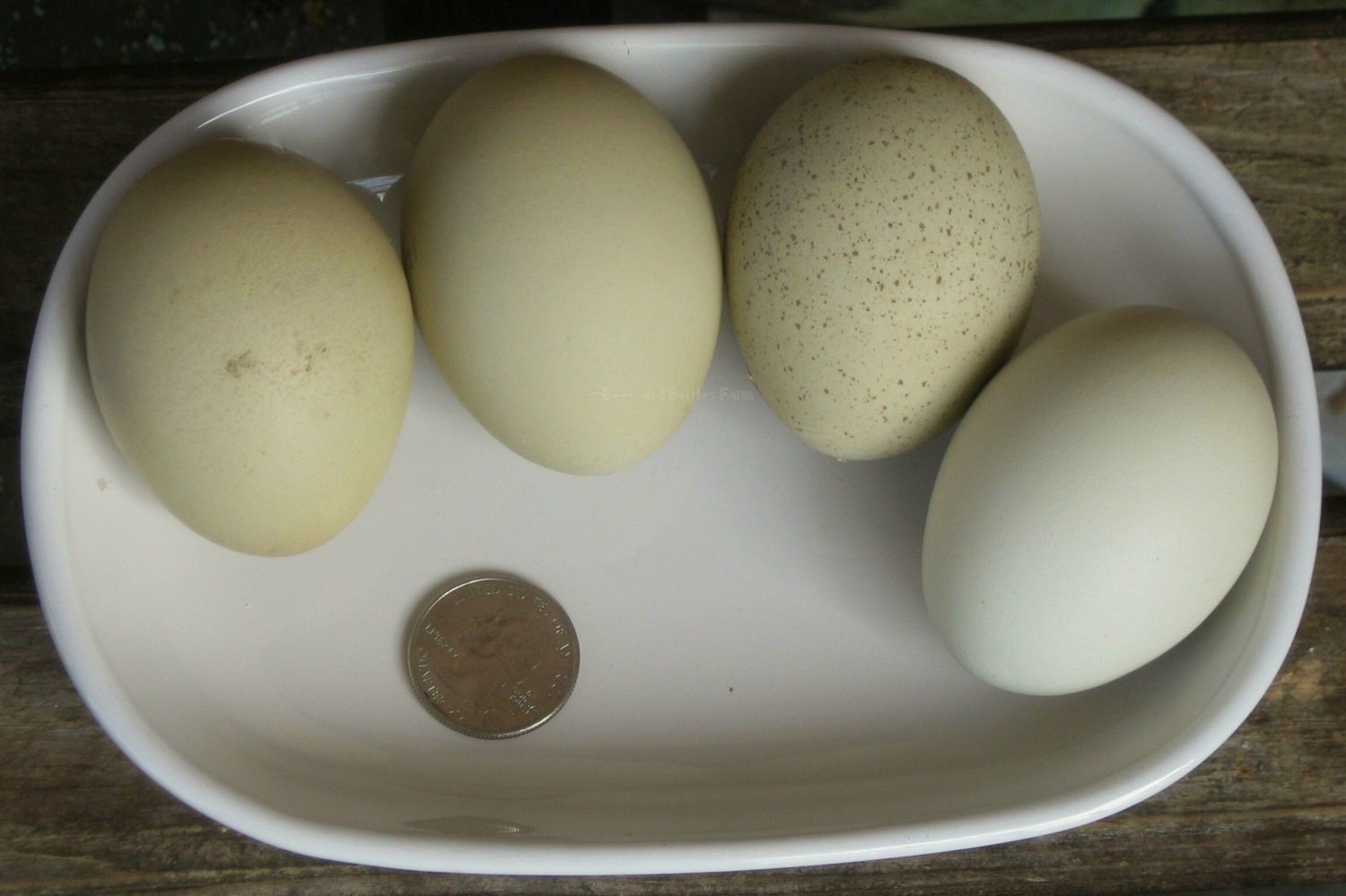- Jun 28, 2011
- 39,160
- 27,417
- 1,302
The (Blue) Isbar is a rare, relatively new breed, that was developed in the 1950s in Sweden, by the Catholic monk, Martin Silverudd. It is a single combed green egg layer, that was meant to be a productive breed and the hens are excellent layers, laying around 200+ large eggs (of various shades of green) a year. They are a smallish breed and is fairly cold hardy. They have a relatively docile temperament, are thrifty easy keepers, and are good foragers.
There are several varieties and colors of Isbar including the beautiful Blue Isbar variety that was imported into the US, which comes in the usual Blue, Black and Splash coloring. The Isbar was originally planned as an auto-sexing breed, but not all colors lend themselves to this. Breeds believed to have gone into the development of the Isbar include Rhode Island Reds, New Hampshire Reds and Cream Legbars.
They are not recognised by the APA.
Details:
Breed purpose: Colored egg layer, various shades of green.
Comb Type: Single
Broodiness: Seldom
Climate Tolerance: Average, Cold Hardy
Weight: Roosters 5.5lbs, hens 4.5lbs
Egg Productivity: Good
Egg Size: Large
Egg Color: Green

Cockerel, picture by @dfdesigns

Pullet, picture by @fbdanes

Chicks, picture by @SanAntoneChicken
BYC Breed reviews:
https://www.backyardchickens.com/products/blue-isbar
General breed discussions & FAQ threads:
https://www.backyardchickens.com/t/535731/isbar-thread/0_20
https://www.backyardchickens.com/t/612806/blue-isbars-pictures-and-discussion/0_20
Do you own Isbars? Are you an Isbar breeder? If so, please reply to this thread with the your thoughts and experiences, including:
· What made you decide to get this breed?
· Do you own them for fun? Breeding? Some other purpose?
· What are your favorite characteristics about this breed?
· Post some pics of your birds; male/female, chicks, eggs, etc!
We have a bunch of other awesome breed-focus threads for you to enjoy. You can see all of them here: https://www.backyardchickens.com/threads/chicken-breed-focus-project.975504/
There are several varieties and colors of Isbar including the beautiful Blue Isbar variety that was imported into the US, which comes in the usual Blue, Black and Splash coloring. The Isbar was originally planned as an auto-sexing breed, but not all colors lend themselves to this. Breeds believed to have gone into the development of the Isbar include Rhode Island Reds, New Hampshire Reds and Cream Legbars.
They are not recognised by the APA.
Details:
Breed purpose: Colored egg layer, various shades of green.
Comb Type: Single
Broodiness: Seldom
Climate Tolerance: Average, Cold Hardy
Weight: Roosters 5.5lbs, hens 4.5lbs
Egg Productivity: Good
Egg Size: Large
Egg Color: Green
Cockerel, picture by @dfdesigns
Pullet, picture by @fbdanes
Chicks, picture by @SanAntoneChicken
BYC Breed reviews:
https://www.backyardchickens.com/products/blue-isbar
General breed discussions & FAQ threads:
https://www.backyardchickens.com/t/535731/isbar-thread/0_20
https://www.backyardchickens.com/t/612806/blue-isbars-pictures-and-discussion/0_20
Do you own Isbars? Are you an Isbar breeder? If so, please reply to this thread with the your thoughts and experiences, including:
· What made you decide to get this breed?
· Do you own them for fun? Breeding? Some other purpose?
· What are your favorite characteristics about this breed?
· Post some pics of your birds; male/female, chicks, eggs, etc!
We have a bunch of other awesome breed-focus threads for you to enjoy. You can see all of them here: https://www.backyardchickens.com/threads/chicken-breed-focus-project.975504/
Last edited by a moderator:











